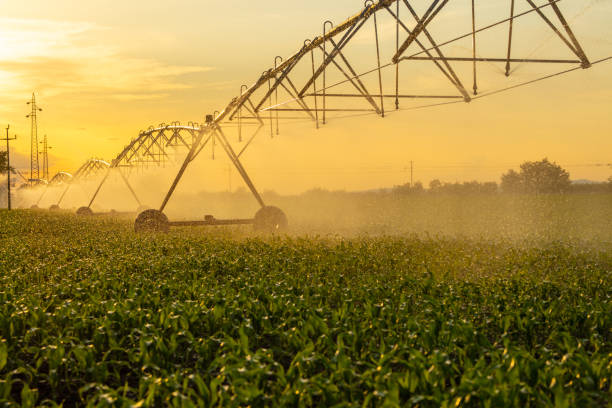The Importance of Irrigation

When determining when to irrigate, consider the needs of the plants as well as soil water availability and storage capacity. Under and over-irrigation of plants can have detrimental effects on yield and quality. Proper irrigation practices are key to maximizing water usage and reducing costs of production. Listed below are some of the most important aspects of irrigation northbrook:
A modern irrigation system uses tanks, wells, and reservoirs to distribute water evenly across the field. Water may be diverted from a reservoir via pipelines, pumps, or even a nozzle. The water then drips down between rows of crops or may be sprayed through large sprinklers. Or, water may be dropped through a piped network to reach plants individually. This system is most effective in highly fertile soils.
Subirrigation is one of the most common types of irrigation. In a commercial greenhouse, water is delivered below the plant surface and is absorbed upwards. Excess water is collected and recycled. A trough with water and nutrients floods the plant bed for ten to twenty minutes before returning to a holding tank for reuse. Subirrigation is costly and requires sophisticated management. However, it offers a number of benefits, including water conservation and labor savings.
Irrigation systems have several advantages. They can be set to sprinkle water during the early morning and late night, which maximizes the moisture required by the plants. Irrigation also improves agricultural productivity, reduces poverty, and improves income. It allows the countryside to flourish and food production to be exported. With irrigation, food can be grown year-round, which is good for the environment, the economy, and the economy. And, besides being good for the environment, irrigation also benefits human health.
Besides boosting crop production, irrigation also supports local rural economies. In many U.S. states, irrigated crops contribute to the economy by supporting local livestock, food processing, and transportation sectors. In addition, it is also a significant source of energy. But there are downsides. Before choosing the method to use in your farm, consider your options. There are a number of important factors to consider before making the decision. Once you determine the best option for your farming business, you'll be glad you did. You can learn more about this topic here: https://en.wikipedia.org/wiki/Irrigation.
The importance of irrigation cannot be overstated. Agriculture accounts for 42 percent of the nation's total freshwater withdrawal in 2015. It has helped increase the productivity and profitability of the agricultural industry. In 2015, irrigated farmland accounted for 54 percent of crop sales. Only 20% of the world's cropland is dry. This means that agriculture must make use of water as efficiently as possible to meet demand. A key issue for agribusiness is water availability.
Government subsidies are another key factor for irrigation. These subsidies can cover energy costs associated with running groundwater pumps and also support the price of irrigated crops. In India, the government offers a flat energy subsidy based on the amount of electricity used for irrigation. As a result, more farmers are using groundwater resources and putting a strain on aquifers. By implementing policies that support more efficient irrigation, the potential for overuse of groundwater resources is greatly reduced.
